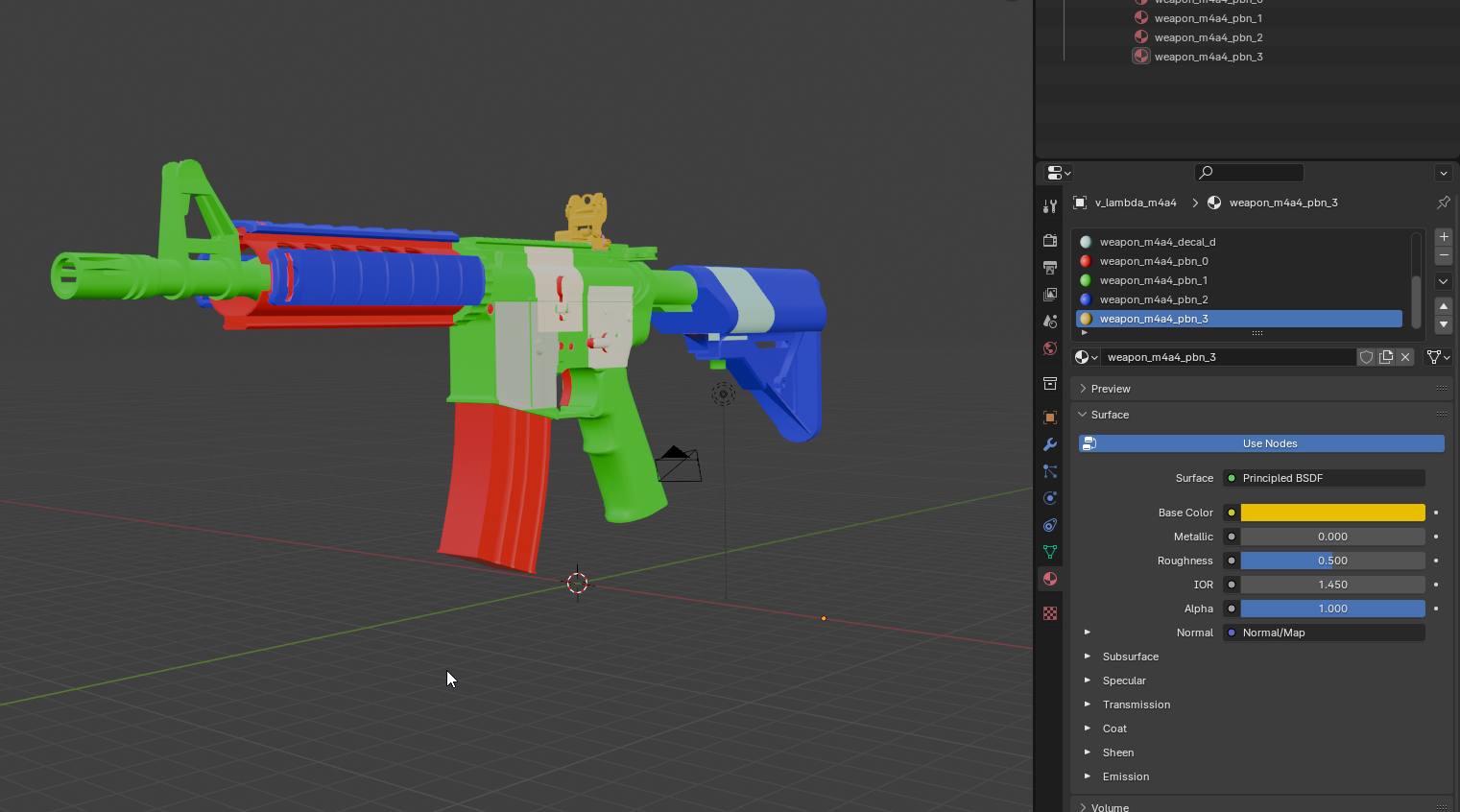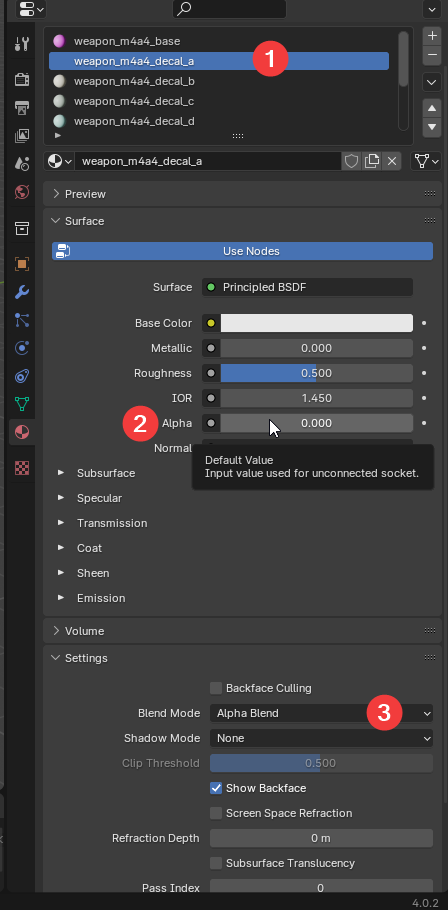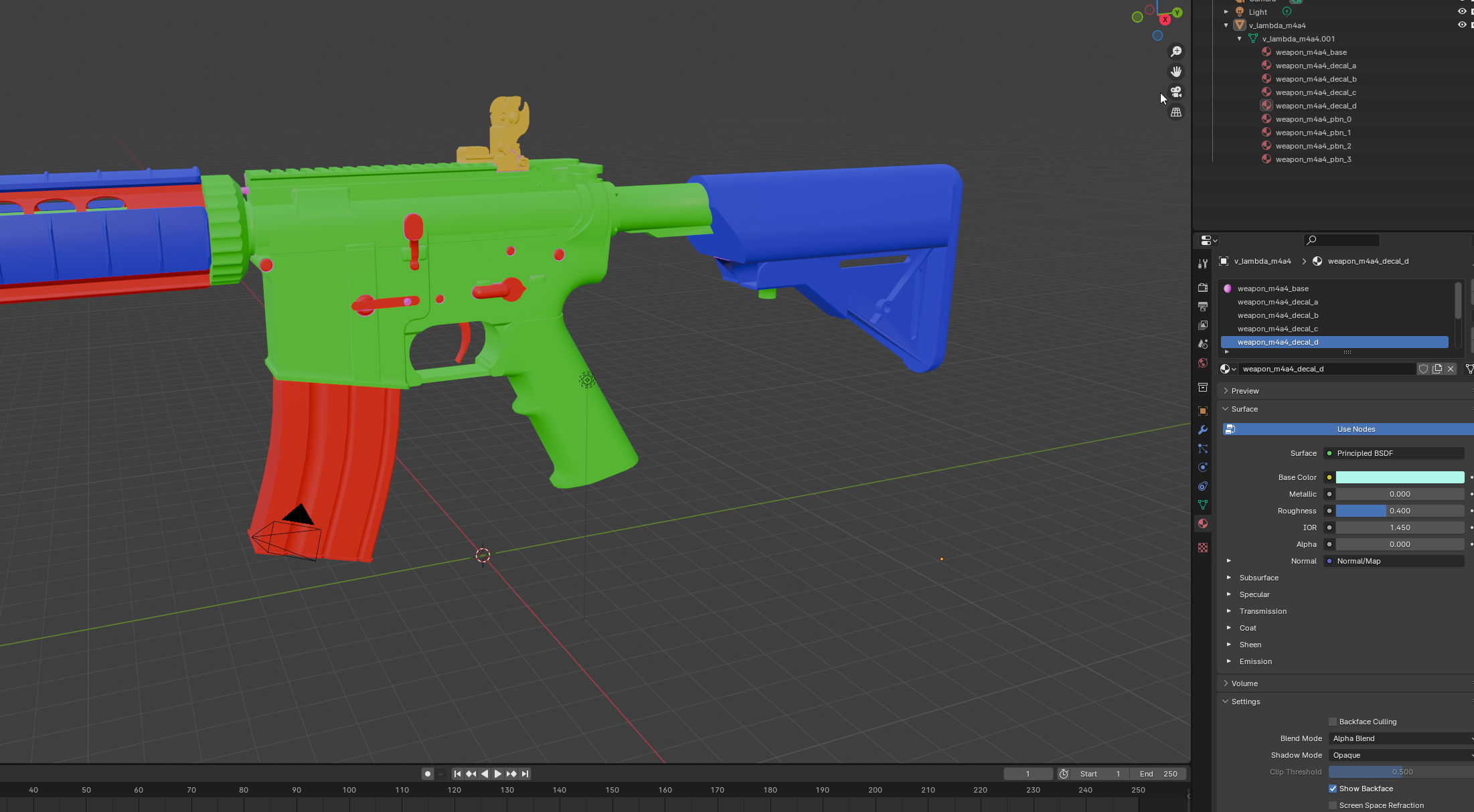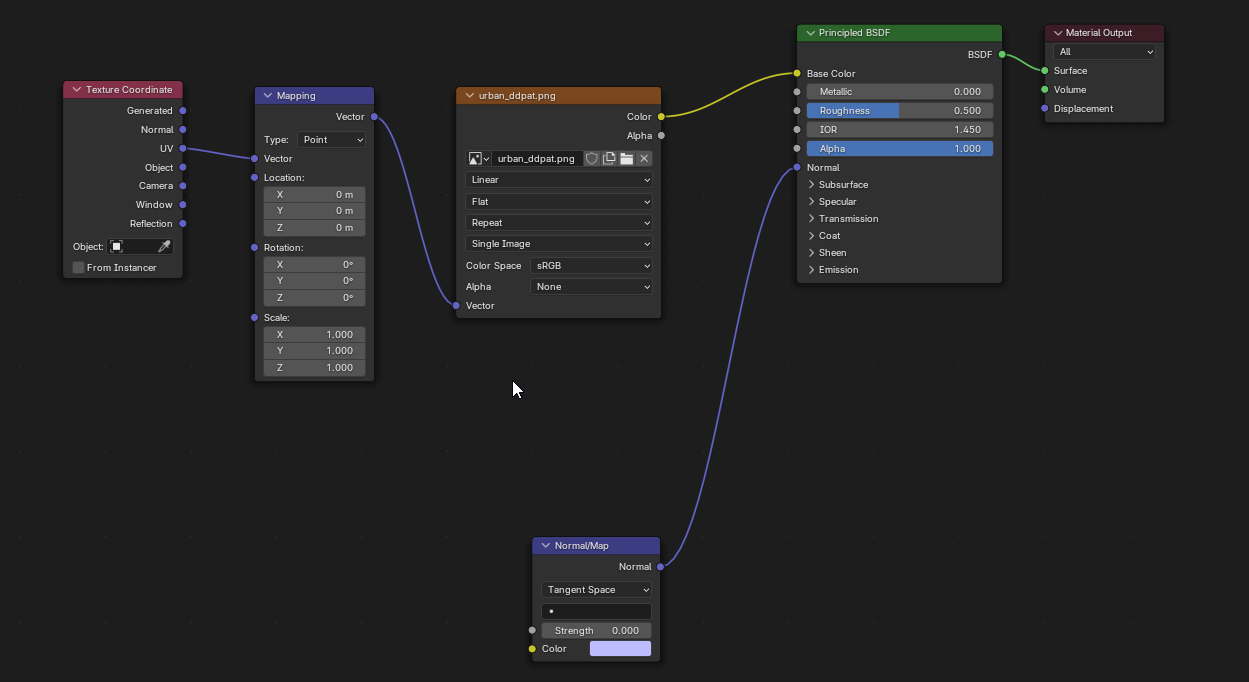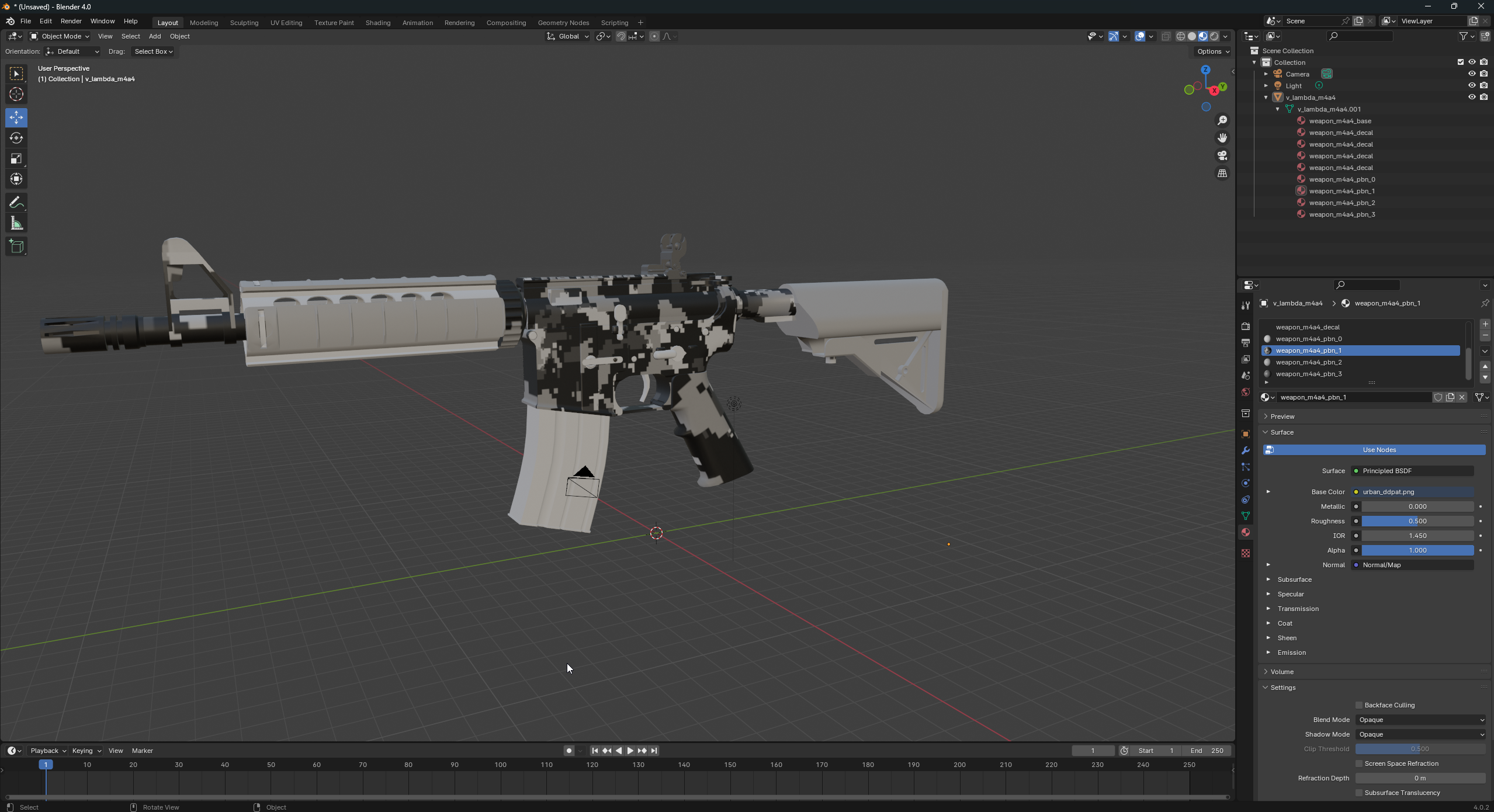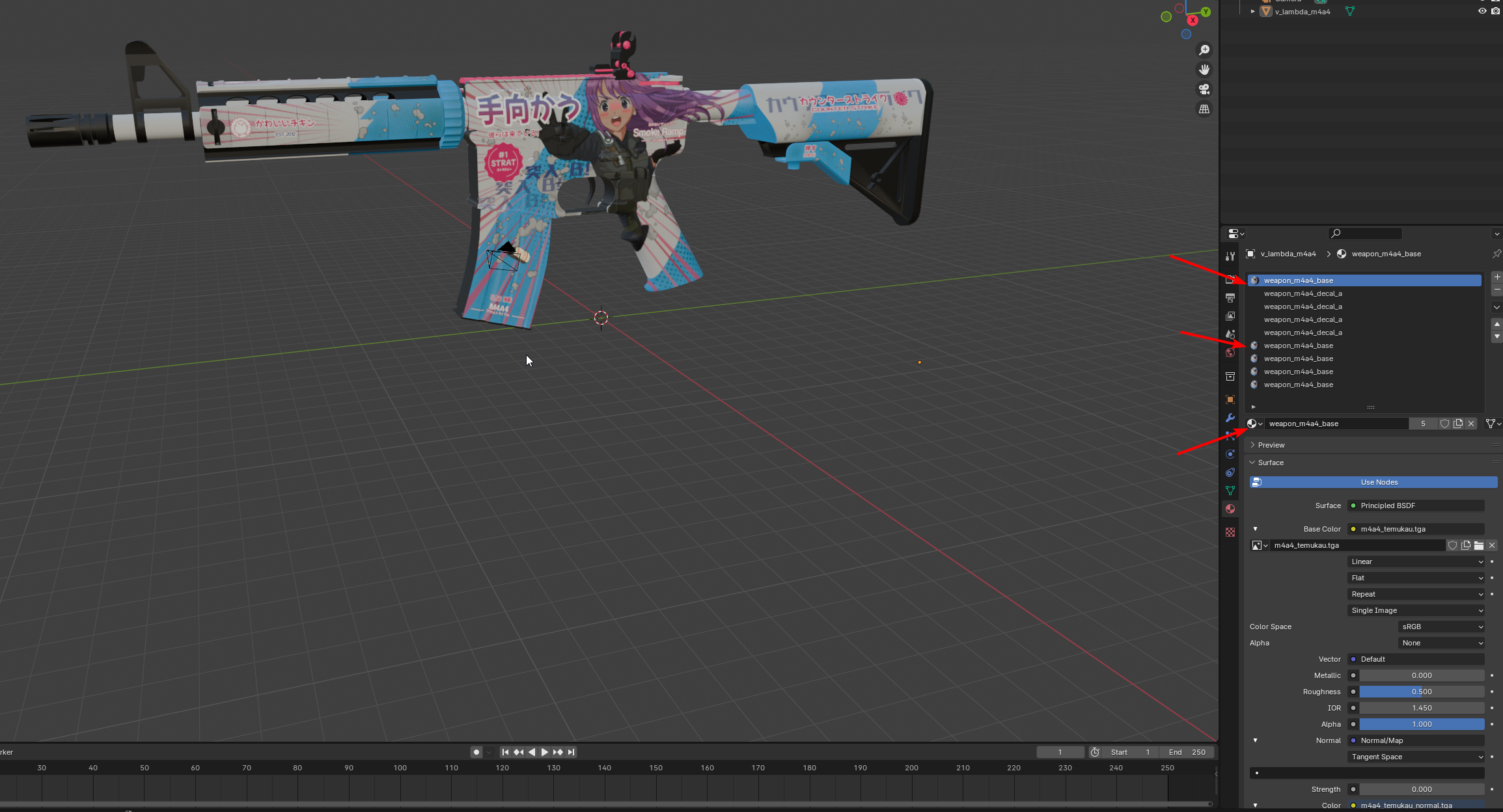Introduction
When working with the 3D Models in blender, we recommend using the .FBX files, as these include not only the Paint-By-Number slots for each weapon, but they include sticker slots so that you can see how your finish looks with stickers.
Once you've imported the FBX in to Blender, it will look something like this:
Some weapons have more material slots than others. Most have up to four paintable sections, some like the AUG and P90 only have two.
Materials that are used for painting the weapon end in pbn_x
In addition, there is also a _base material, you should set this to the default weapon material, for pattern based applications, this should not be used.
In the example above, we have four seperate material slots for the M4A4
In the screenshot above, I've coloured each slot.
- Slot 0: Red
- Slot 1: Green
- Slot 2: Blue
- Slot 3: Yellow
Changing the colours of each part of the model can help you visualise the different material slots, which parts you may want to keep as the default material.
There are also 4 white materials, these represent the stickers, which you can hide, this is detailed below.
Hiding Stickers
If you wish to hide the stickers, you can do this easily by modifying the material.
- Select the Sticker material (e.g weapon_m4a4_decal_a)
- Set the Alpha value to 0.0
- Expand Settings and set Blend Mode to Alpha Blend
You will now notice that the stickers have been hidden from the weapon model.
If you ever need to enable stickers for testing, simply set the Alpha back to 1.0, or you can import your own sticker for testing.
Using for testing patterns
When testing for patterns, select the area that you wish to apply the pattern to.
In this example, the M4A4 | Urban DDPAT is being used, this is a Hydrographic pattern which paints one part of the weapon with the pattern and the rest with the colours used in the pattern.
Select the first area which you want to apply the pattern to, in this case, I'm using weapon_m4a4_pbn_1.
In the screenshot above, this is the green area.
- In the Material Editor, click on "Use Nodes"
- Click on the Viewport Mode top left
- Click on "Shader Editor"
- Right click
- Click Add
- Click Texture
- Click Image Texture
Do the same again but for the following node types:
- Input -> Texture Coordinate
- Vector -> Mapping
Connect the nodes as per the example below
Go back to the 3D Viewport by pressing SHIFT + F5 and the weapon will now look like this:
You can adjust the X, Y, Rotation and scale in the mapping node to change how your pattern scales, rotates and moves.
Testing Custom Paint Finishes
Set the material weapon_[weapon]_base to your custom material.
Go through each of the weapon_[weapon]_pbn_[number] materials and set it to use the weapon_[weapon]_base material.
This will make all of the slots use the base material, thus showing the custom material on all material parts.
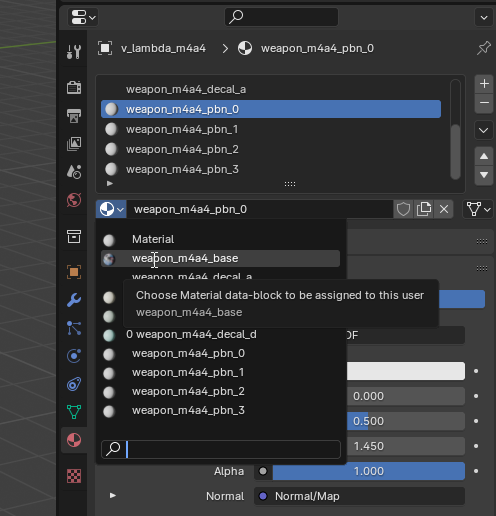
In the 3D viewport, you should now see your custom material across the whole model.

